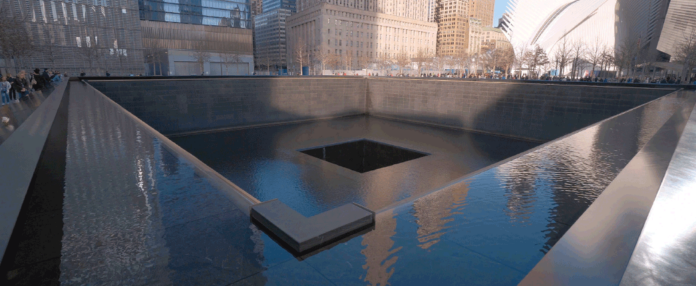Sustainability
The preeminent circle of patrons committed to supporting key initiatives of the 9/11 Memorial and Museum in New York are called “Sustainers.”
After many years, I returned to New York and Washington, D.C. in September for a vacation with my son. We were at Ground Zero on September 11, the 22nd commemoration day of the terrorist attacks of 2001.
But in 2023 we can also celebrate the 50th anniversary of the opening of the original World Trade Center, which happened on April 4, 1973. At the time of their completion, the Twin Towers were the tallest buildings in the world.
In coordination with its 50th opening anniversary, the 9/11 Memorial and Museum announced on April 5, 2023 the opening of a new exhibition through artworks. Called “Towers Rising: Envisioning the World Trade Center Before and After 9/11,” the exhibition explores how New York City has redrawn its iconic skyline over time.
Staying with the number 22 and the month of April, on Earth Day 2022—which is celebrated on April 22 each year—the 9/11 Memorial Plaza was named as one of the most sustainable plazas ever constructed, designed to conserve energy, water and other resources.
Rainwater is collected in storage tanks below the plaza’s surface, and the tanks supply water for the 413 swamp white oak trees and other vegetation. The American Society of Landscape Architects describes the 9/11 Memorial as a “massive green roof—a fully constructed ecology—that operates on top of multiple structures.”
But Memorial Plaza is not the only sustainable spot in New York City. My son and I started our Manhattan tour with the Empire State Building, which is one of the most energy-efficient buildings in the world.
The Empire State Building has become a shining symbol of sustainability in New York City—literally. At night, the lights that define the building’s skyline silhouette are powered exclusively by green energy and the building built in 1930 is undergoing an ambitious retrofit to become carbon neutral by 2030, exactly one hundred years after its was erected.
Officials have already cut carbon emissions of the Empire State building by more than 50% through efforts such as adding insulating film to prevent heat loss through the building’s windows and upgrading the elevator’s braking system so it can be used as a power source. Given the landmark’s status as a globally recognized icon, its switch to sustainability is a clear sign of New York City’s quiet evolution into an eco-friendly hub for innovation.
To understand the carbon footprint of cities all over the world, it is imperative to look at their skylines. In a city like New York, about 70% of carbon emissions come from buildings. “If we tackle the buildings, we solve the planet crisis,” said Kathy Hochul, the first female and 57th governor of New York State.
Coming back to the Sustainers, to me these are not only the people who support the key initiatives of the 9/11 Memorial and Museum in New York, but all the people in the world who dedicate their ambition to preserving memories, monuments and thus mankind.
STAY SuSTAYnable!
Apu Gosalia is a sustainability expert. He can be reached at apurva.gosalia@web.de.
